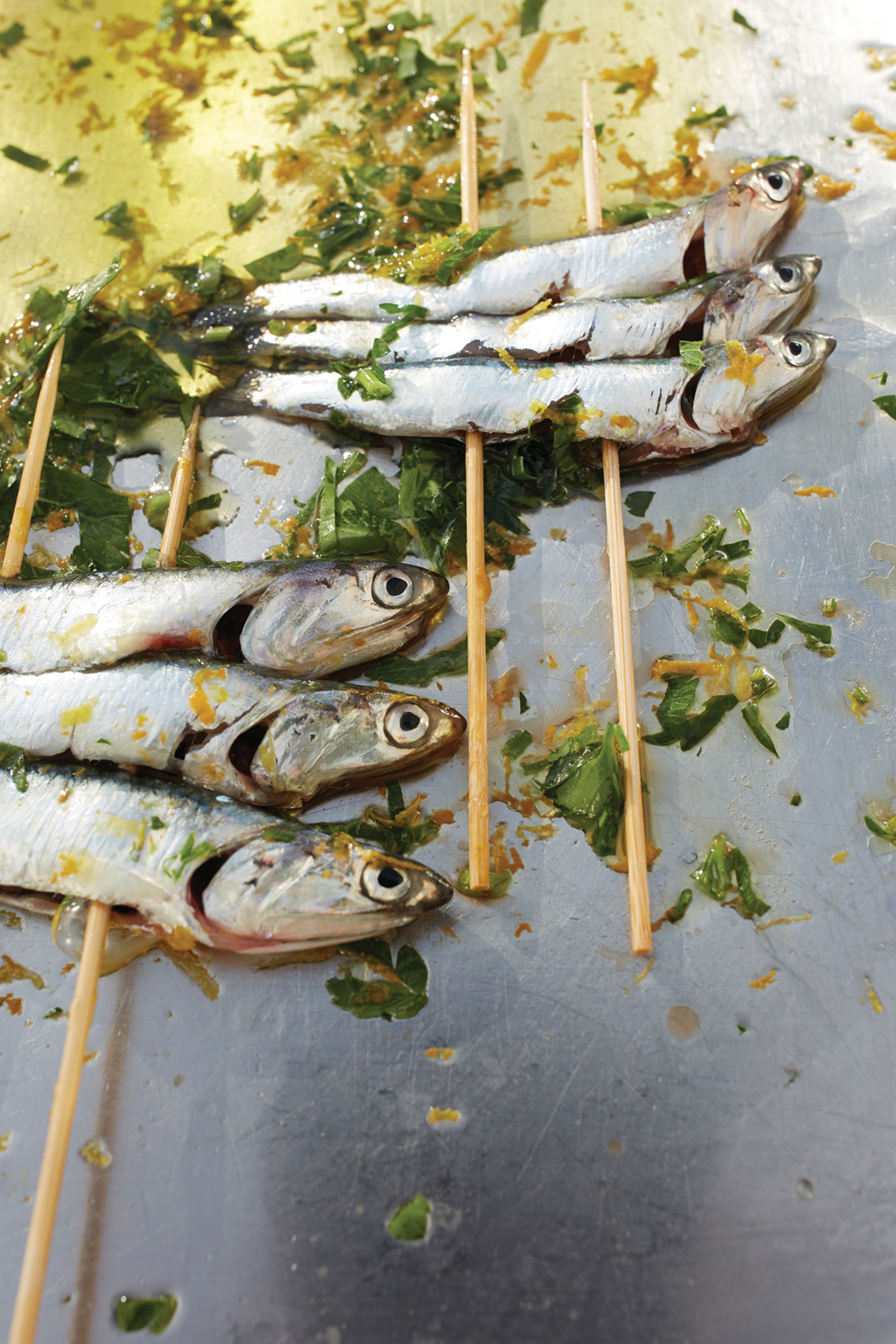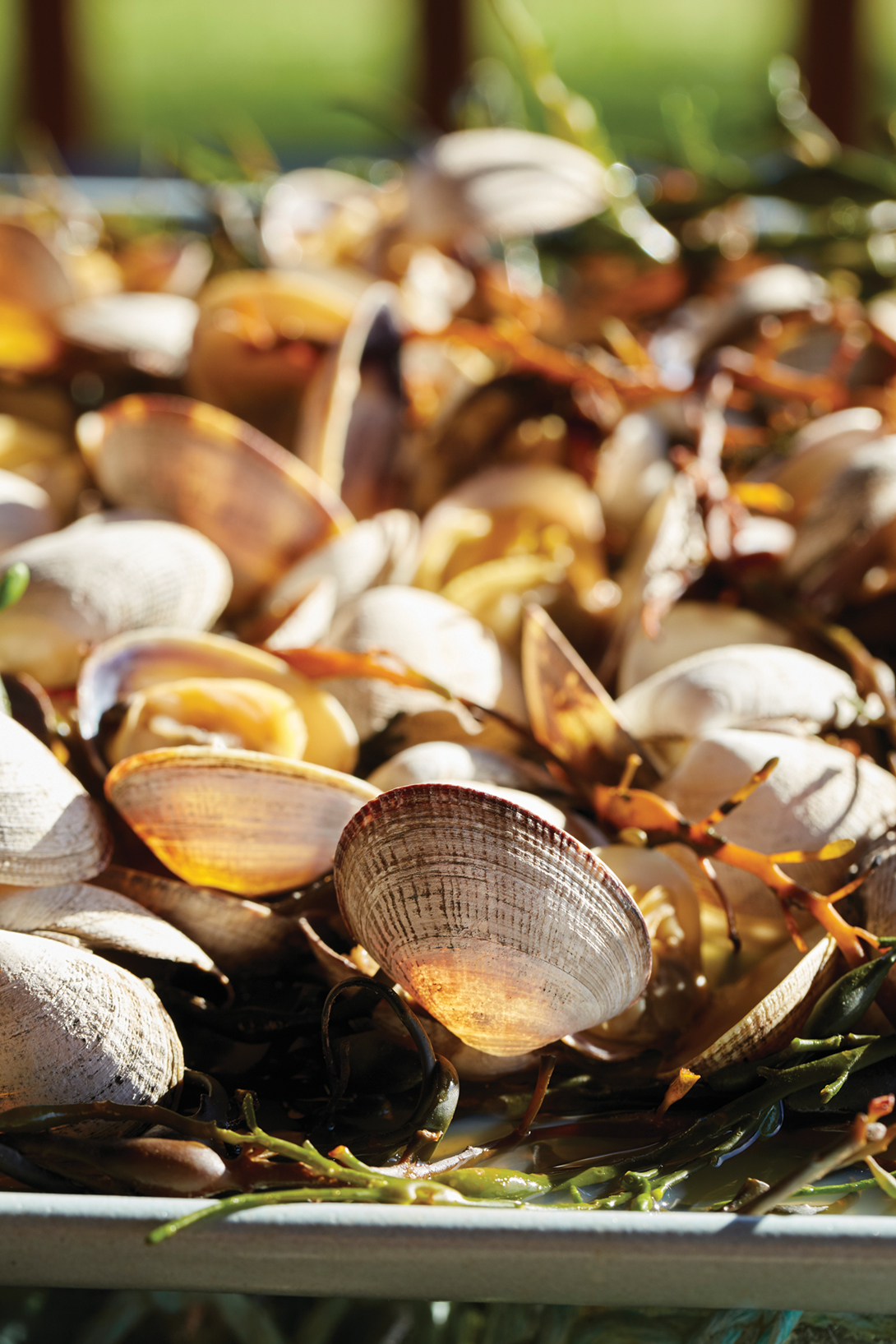Marin County is bordered by the Pacific Ocean, with its nutrient-rich, cold-water upwellings, and the San Francisco Bay, the biggest estuary on the West Coast. We should be a seafood-savvy region, but walk into many restaurants or grocery stores and you’re likely to find farmed salmon from Chile or Scotland, shrimp and tilapia from Asia or other imported seafoods of quality far inferior to what we harvest in our own backyard.
Imported seafood is cheaper and farmed seafood is reliably available year-round, whereas many of our local, wild species are seasonal. You may pay more for the quality: our fishermen and women often live in Marin and elsewhere in the Bay Area, so their living and operating costs are higher than in countries that rely on cheap or slave labor to produce seafood.
The West Coast of the United States sets standards in sustainable practices that the rest of the world would do well to emulate. Our fishermen and women are limited in when and where they take fish and how much they are allowed to catch. They collaborate with scientists and environmental groups to keep our waterways healthy. Many other nations often have very low or no environmental standards — some places still dynamite fish and chase tuna with helicopters and drop bombs on them. With no observers on board, the bycatch, or species unintentionally caught and discarded — including whales, turtles and seabirds — is estimated to be 43 billion pounds a year globally. That’s far less of a problem with most fisheries here.
Local fishermen and women use gear like hook-and-line or baited traps, they fish in designated areas, and some have observers on board to monitor bycatch. By eating local seafood, we not only eat sustainably and help the ocean, but also support our local fishermen and women, who in turn spend their money in our community. We also get the pleasure of eating the freshest, highest-quality seafood available while enjoying a visceral connection to our natural world. Here are simple routes to doing just that.
GO LOCAL
Ask your server or fishmonger, “What’s local?” If they know the name of the fishing vessel it came from, even better.
Nick Krieger, who lives in Strawberry, grew up in Bolinas and in summer still teaches at a surf camp there when he’s not running his salmon sportfishing charter company or heading offshore to commercially pot-fish for black cod or Dungeness crab. With pot fishing (using a baited trap) rather than using nets or hooks, there’s virtually no bycatch.
“Most of what I catch goes to Scoma’s and Fish Restaurant in Sausalito and the Coast Cafe in Bolinas,” he says. “This year the halibut bite in the San Francisco Bay and king salmon catches out off Duxbury Reef have been so strong that the prices are low and fish plentiful.
Restaurants that don’t sell local seafood are really just lazy,” he adds. He also likes Osteria Stellina in Point Reyes and Fradelizio’s Ristorante in Fairfax for local seafood. “The owner of Fradelizio’s, Paul, drives to Bolinas and buys straight from the boats. He gets a good price and his customers get a great product.”
HEED THE SEASON
While everyone in Marin knows when asparagus season ends and tomato season begins, there’s a lot less known about the best times for sand dabs and salmon. And while “organic” tells you something about your produce and “pasture raised” about your eggs, those labels don’t apply to seafood.
If it’s in the middle of the winter and there’s no wild king salmon, order local black cod instead — it’s richly delicious and has even more omega-3 than salmon. “Pick a few local favorites and learn the seasons and origin,” advises Kelly Collins Geiser, who heads Slow Food San Francisco and organized Slow Fish there a few years back.
“Halibut and salmon in the summer, crab in the winter, and lingcod spring through fall. If it’s not local, make sure it’s domestic and buy frozen.” Her home in Petaluma is a pickup site for the Gypsy Fish Company, founded by Christopher Wang, a California fisherman who travels to Bristol Bay each summer to catch sockeye salmon, which he cuts into dinner-size portions, freezes immediately, and then delivers to drop sites throughout the year.
“Frozen is often more fresh than fresh,” Collins Geiser notes. The process of freezing keeps the fish intact and healthy, whereas a “fresh” fish, local or not, may spend three to seven days at the bottom of a boat, one to three days in a warehouse, one day in transport, and one to four days in a mar- ket or restaurant. By the time you get it, it’s not so fresh anymore. “This is why buying directly from the fisher and understanding the seasons makes everything more delicious,” she adds.
THINK SMALL

Little fish like herring, mackerel, anchovies and herring are sustainable choices because they’re low on the food chain. By contrast, the farmed tuna or salmon that consume these little fish have a high conversion rate: it takes three pounds of ocean forage fish to produce one pound of farmed salmon, and 22 pounds of ocean fish to produce one pound of tuna.
Smaller fish are also full of omega-3s and low in mercury and PCBs. Yet even though herring and anchovies live in the bay and smelt are along the coast, these aren’t always easy to find in stores and restaurants. Kirk Lombard, aka Sea Forager, leads tours teaching people how to harvest local seafood, has written a book on the subject and stocks CSF (community supported fishery) pickup boxes with local choices around the Bay area (including at the New Village School in Sausalito). He sings the praises of the night smelt and surf smelt: “These you might see in a restaurant as ‘fries with eyes.’ But, Americans really don’t eat small fish,” he adds. “They want a big piece of protein with no bones. If this was Denmark, when the herring arrive each winter, they wouldn’t call it January, but rather, ‘herring time.’ ”
But while Bay Area fishermen “catch herring by the tons, there’s only one buyer in the area, and he sends them to the Central Valley to get processed and shipped to Japan. There’s just not a system to get them to local chefs.” He recommends catching your own fresh herring in the bay — follow him on twitter @seaforager to learn when — and buying live anchovies behind Scoma’s in S.F. at Pier 47: get the small scoop for $20 cash and fry them up for dinner or preserve them in salt and lemon. The Herring Festival in Sausalito, held every winter to raise funds for the Sausalito Community Boating Center, is another place to sample little fish.
GET REGENERATIVE
 Regenerative foods aren’t just sustainable; they improve the habitat where they’re produced. Oysters, clams and mussels, for example, filter out naturally occurring algae so that sunlight reaches the bottom of the bays where eelgrass grows. That’s habitat for crab, herring and other creatures. Hog Island Oyster Co. in Tomales Bay has been working with UC Davis Bodega Bay Marine Laboratory to monitor acid levels and temperature changes in Tomales Bay and with UCSC scientists to plant and monitor seagrass that pulls carbon out of bay water, making it slightly less acidic.
Regenerative foods aren’t just sustainable; they improve the habitat where they’re produced. Oysters, clams and mussels, for example, filter out naturally occurring algae so that sunlight reaches the bottom of the bays where eelgrass grows. That’s habitat for crab, herring and other creatures. Hog Island Oyster Co. in Tomales Bay has been working with UC Davis Bodega Bay Marine Laboratory to monitor acid levels and temperature changes in Tomales Bay and with UCSC scientists to plant and monitor seagrass that pulls carbon out of bay water, making it slightly less acidic.
In 2018, the owners of Salt Point Seaweed launched a pilot program with Hog Island Oyster Farm to collaborate on cultivating culinary seaweed among the shellfish beds, which might also sequester carbon and mitigate acidification. “Our strategy has always been to minimize our impact,” Hog Island co-owner Terry Sawyer adds. “Oysters require virtually no inputs like fertilizer and fresh water to start with. We want to study and understand our impacts and improve every year.”
DIVERSITY
Try something new. Uni from purple sea urchin, shortspine thornyhead, coon-striped shrimp, McFarland Springs trout, smoked mussels — there are many more fish in the sea than we see on most menus. If you check the specials board at Fish restaurant in Sausalito, you might well find salmon roe on snap pea salads or fish skin chicharrones dusted with fennel pollen.
Executive chef Douglas Bernstein has tips for getting seafood into a diet in creative ways: “Roast or char fish bones, like black cod, and make a broth out of it for dashi. Use seaweeds in your salads for ocean minerals. Sand dabs are great — pan-sear them until they are crispy and they come right off the bone. Serve them over farro salad with almonds and fresh herbs and winter squash and finish with lemon and pickled onion.” And local wholesaler TwoXSea now sells sustainably farmed McFarland Springs trout, which have an algae-based diet so no fish are taken from the ocean to feed them. With so many choices and industry pioneers in our midst, it’s easier than ever to feed ourselves and our community in sustainable ways.






